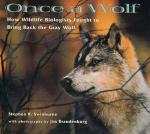|
This section contains 343 words (approx. 2 pages at 300 words per page) |
A career in wildlife biology may consist of conducting research through a university, zoo, or science museum or of working for the government or private corporations. When based out of an academic organization, wildlife biologists dedicate their time to modeling the lives and interactions of particular species or particular environments. Governmental wildlife biologists make recommendations on new legislation that may affect the survival of endangered animals or environments. Wildlife management administrators oversee the running of state and national parks. Governments of countries that strongly rely on ecotourism employ wildlife biologists and environmental technicians to create tourist-friendly parks or to reconstruct environments that were damaged in the past. In work for business and corporations, wildlife biologists test the effects of factory pollutants on the environment, advise businesses on where to build new structures, and sometimes actively monitor wildlife preserves located on corporation property.
Wildlife biologists must be able to calculate and predict population sizes, migration patterns, birth and death rates, and environmental interactions, all of which necessitate a strong background in mathematics, physics, and computer science. Most positions offered in this field require a strong background in natural sciences, with a graduate degree in wildlife biology or fishery. Recommended course work includes habitat design, wild bird management, large mammal conservation, wildlife ecology, and fisheries ecology. Courses in wild animal veterinary science may also be valuable for some positions. To pursue a career in wildlife biology, it is best to begin early: volunteer at a local zoo, veterinary clinic, or landscaping firm. Seek out wildlife researchers from among college professors and offer to help them with their research. In addition to mathematics and science classes, take classes in public speaking, economics, or political science. A bachelor's degree can be followed by graduate studies, and by volunteer or salaried work in a national park.
 A group of wildlife biologists examine a tranquilized giant panda.
A group of wildlife biologists examine a tranquilized giant panda.
Bibliography
Leopold, Aldo. Game Management. Boulder, CO: Johnson Books, 2000.
Maynard, Thane, and Jane Goodall. Working with Wildlife: A Guide to Careers in the Animal World. New York: Franklin Watts, 1999.
|
This section contains 343 words (approx. 2 pages at 300 words per page) |


